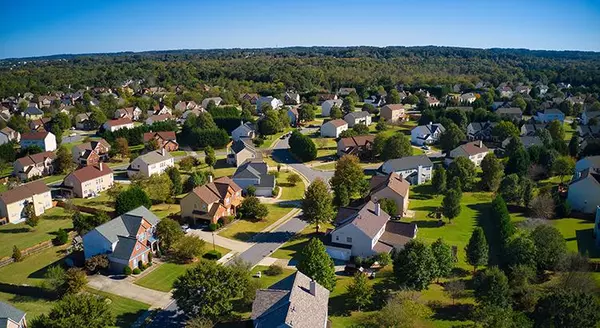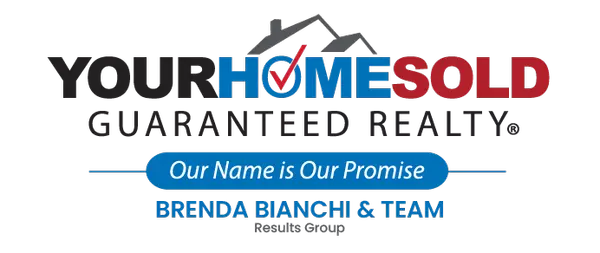Rental Property vs. Fix-and-Flip: Which Strategy Wins in 2025?
Rental Property vs. Fix-and-Flip: Which Strategy Wins in 2025?

Alright, let’s be real for a second, if you’ve ever watched one of those home renovation shows where someone buys a beat-up house, slaps on some paint, and walks away with a big fat check, you’ve probably thought, “Hey, I could do that.” At the same time, maybe you’ve also dreamed about owning rental properties and collecting passive income every month while you sip your morning coffee. Both sound pretty sweet, right? But the big question in 2025 is: which strategy actually works better? Which one brings more money, less stress, and long-term wins?
Let’s dive into the world of rental properties and fix-and-flips and break down what’s really going on this year in the real estate game.
The Basics: What’s the Difference?
Before we start comparing, it’s important to make sure we’re talking about the same things.
Rental property investing is when you buy a home, apartment, condo, or even a multi-unit building with the intent to rent it out and collect monthly income. The idea here is long-term wealth, you're holding onto that property, possibly for years or even decades.
Fix-and-flip investing, on the other hand, is more like a sprint. You buy a house (usually one that needs serious work), fix it up as quickly as possible, and sell it for a profit. Think “buy low, renovate fast, sell high.”
Both can be profitable, both come with risks, and both attract different types of people. But let’s dig a little deeper.
What’s Happening in 2025’s Market?
The housing market in 2025 is a totally different beast compared to a few years ago. After the wild ride of the 2020s, we’re now in a market that’s stabilizing, but still packed with opportunities if you play your cards right.
Interest rates have cooled off a bit after the hikes we saw earlier in the decade. Inflation is still a thing, but more under control. Home prices in many areas are creeping back up, especially in suburban and mid-tier cities that saw population boosts during the work-from-home shift.
Rental demand is stronger than ever. People still want flexibility, and many just can’t (or don’t want to) buy a house right now. This means good news for landlords, especially those with clean, well-maintained properties in decent neighborhoods.
On the flip side, the fix-and-flip world is seeing tighter profit margins. Why? Because materials and labor costs have gone up and aren’t coming down anytime soon. Also, buyers are savvier, they’re not going to overpay for a pretty kitchen if the neighborhood’s not great or the layout’s weird.
So, where does that leave us?
The Case for Rental Properties in 2025
If you're the type of person who likes slow, steady wins and long-term wealth, rental properties are probably more your vibe.
1. Passive Income That Actually Adds Up
One of the biggest draws of owning rental properties is that sweet, sweet passive income. Sure, there’s some effort upfront finding tenants, dealing with occasional repairs, hiring property managers, but once it’s up and running, it’s money in your pocket every single month.
In 2025, average rents are still high, especially in cities with booming job markets like Austin, Raleigh, and Nashville. Even smaller cities are seeing rent increases due to limited housing supply.
If you pick your property wisely and keep your tenants happy, you could easily make a few hundred bucks (or more) every month in profit after paying your mortgage and expenses.
2. Appreciation Over Time
You’ve probably heard people say, “Real estate always goes up.” That’s not entirely true, but over the long haul, real estate has consistently appreciated in value. If you buy a property now and hold onto it for 10–15 years, odds are it’s going to be worth a lot more by then.
Even better? You get to build equity as your tenants help pay off your mortgage.
3. Tax Advantages Galore
Rental property owners get some killer tax breaks. You can deduct mortgage interest, repairs, property management fees, and even depreciation on paper, your income looks smaller, even though your cash flow might be thriving.
In 2025, with the latest updates to tax laws still favoring real estate investors, these deductions can make a huge difference at tax time.
4. Stability in a Volatile Economy
Let’s face it, when the stock market starts acting up or inflation spikes, people still need a place to live. That means rental properties tend to weather economic storms better than some other types of investments.
If you’ve got a good property in a solid location, you’re almost always going to find tenants.
The Case for Fix-and-Flip in 2025
Okay, so rental properties sound great, but what if you’re looking for quicker returns, more action, and the thrill of turning a dump into a dream home?
Fix-and-flip investing still has its place in 2025, but it’s not quite the same as it was five or ten years ago.
1. Fast Profit Potential
If you know what you’re doing, a fix-and-flip can put tens of thousands of dollars in your pocket in a matter of months. That’s hard to beat. You buy low, renovate smart, and sell for a profit.
Some investors do several flips a year, building wealth rapidly and reinvesting in bigger and better projects.
2. Creativity and Control
Flipping is perfect for people who love hands-on projects. You get to design the kitchen layout, choose the flooring, and decide whether to knock down that weird wall in the dining room.
Plus, you’re in control of the timeline, you don’t have to wait years for the value to go up, you make it happen yourself.
3. Market Demand for Move-In Ready Homes
In 2025, homebuyers are picky. Many don’t want fixer-uppers, they want homes that are ready to go from day one. This means that nicely flipped homes in good neighborhoods can still sell fast and at a premium.
If you can provide what the market wants, flipping still pays off.
The Challenges to Watch Out For
Let’s be honest here neither strategy is all rainbows and dollar signs. Both come with their own headaches, and you should know what you're getting into.
Rental Property Headaches
- Dealing with bad tenants can be a nightmare, think unpaid rent, property damage, and drama.
- Repairs and maintenance can pile up over time, and even the best property manager can’t shield you from every issue.
- You’ll have vacancies sometimes, which means no rent coming in.
- Property taxes and insurance rates are rising in many areas in 2025.
- If your rental unit needs deep cleaning between tenants, you might need to call in services like hvac cleaning services to get the air systems in top shape and that’s an extra expense you didn’t plan for.
Fix-and-Flip Risks
- Renovation costs are higher than ever materials, permits, and labor aren’t cheap in 2025.
- Flips can easily go over budget or run into delays. One missed deadline can kill your profits.
- If the market shifts while you’re mid-flip, you could get stuck with a home that won’t sell.
- Capital gains taxes can take a bite out of your earnings, especially if you flip often.
How to Choose the Right Strategy for You
Alright, now we get to the real question-which one should you pick?
Let’s break it down by personality and goals:
Choose Rental Property If…
- You’re patient and want long-term wealth.
- You like the idea of passive income.
- You’re okay with some occasional headaches for steady returns.
- You have enough capital for a down payment but don’t want to pour everything into renovations.
- You want to build equity and enjoy tax benefits.
Choose Fix-and-Flip If…
- You’re more hands-on and love renovations.
- You want to make quicker money.
- You’re okay with higher risk and potentially bigger rewards.
- You already have a reliable contractor or renovation team.
- You have the cash or access to financing that lets you move fast.
Can You Do Both?
Absolutely. In fact, many successful real estate investors in 2025 are doing both. They might flip a couple homes a year to generate big chunks of cash and then reinvest that money into rental properties that build long-term wealth.
This hybrid model gives you the best of both worlds fast income from flips and passive cash flow from rentals. It also helps diversify your investments and reduce your overall risk.
Tools and Tech Making It Easier
Good news: real estate investing in 2025 is way more high-tech than it used to be.
You’ve got platforms that help you analyze rental markets with a few clicks. Apps that automate rent collection, screen tenants, and even track expenses for tax time. There are tools that help you estimate rehab costs before you even visit a property and virtual staging software that makes your flip listings look amazing.
You don’t need to be a pro to get started, but you do need to use the right tools to stay competitive.
Final Thoughts
There’s no one-size-fits-all answer here. The real estate strategy that “wins” in 2025 depends totally on your goals, your personality, and how much time and money you’re willing to invest.
If you’re in it for the long haul and want a steady stream of income, go with rentals. If you’re looking for excitement, quick flips, and the satisfaction of watching a property transform, flipping might be your thing.
Or maybe you’ll end up doing both and create a real estate empire that balances short-term gains with long-term growth.
Recent Posts











